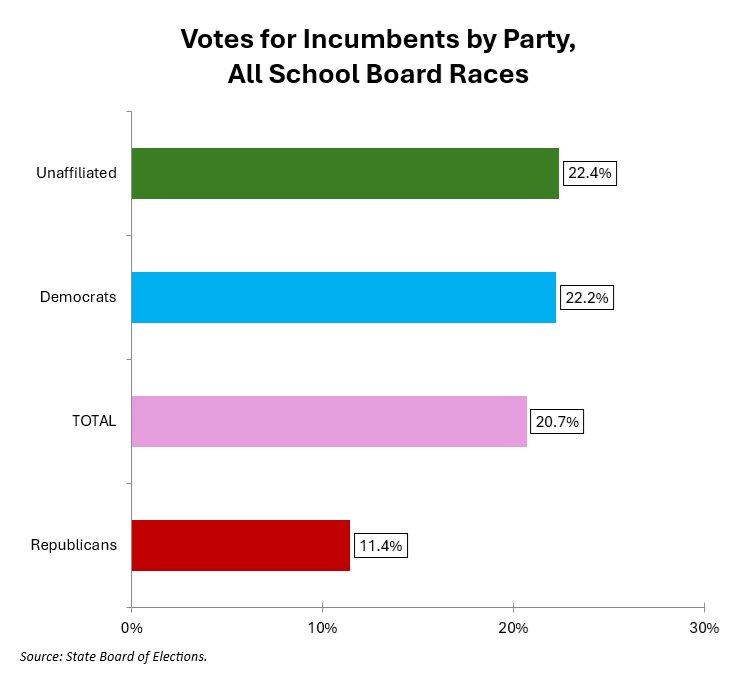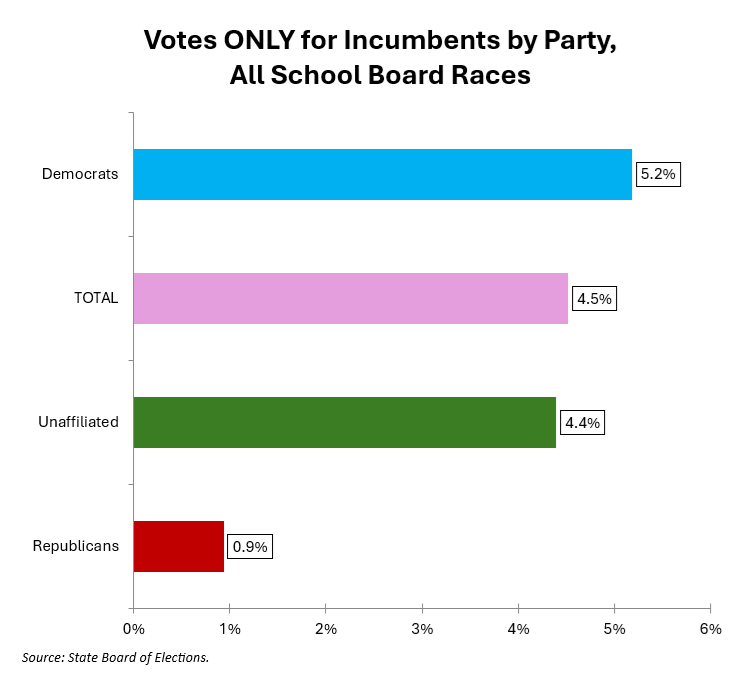By Adam Pagnucco.
Part One introduced the premise of this series: the use of cast vote records to examine partisan differences in voting in the 2024 school board primary. Part Two looked at turnout by party. Now let’s examine voting for school board incumbents by party.
Before looking at the data, let’s note that the percentages in this series are different than those reported by the State Board of Elections because the denominator here includes overvotes and undervotes, not just votes for candidates. Overvotes occur when a voter votes for more candidates than allowed (for example, voting for two people for just one seat). Undervotes occur when a voter does not cast a vote for that seat. Undervotes are very common in school board races. One of the advantages of using cast vote records, as this series does, is that they explicitly include overvotes and undervotes. So when overvotes and undervotes are included, the percentage received by any one candidate or groups of candidates is lower than when overvotes and undervotes are excluded.
Counting overvotes and undervotes, the three school board incumbents (Lynne Harris at-large, Rebecca Smondrowski in District 2 and Shebra Evans in District 4) received 21% of all votes cast in the primary. (Excluding overvotes and undervotes, they received 26%). Here is how their combined vote was distributed by party.

Democrats and unaffiliated voters each cast 22% of their votes for incumbents, driving the total results. Republicans were the outlier, casting just 11% of their votes for incumbents. Maybe the GOP is not crazy about the current state of MCPS!
Let’s go further. The chart below shows the percentage of voters in each party who cast their votes ONLY for incumbents in the three school board races.

By this measure, incumbency mattered a lot less as only 4.5% of voters voted exclusively for incumbents. That dropped to less than 1% among Republicans.
Why are these two measures so different? One reason could be that two incumbents – Harris and Evans – were listed first on the ballot in their races. So incumbency has a partial overlap with another factor we will be examining in this series: the alphabet. Smondrowski was not listed at the top of the ballot, so when she is included in the incumbent-only stat, there is a drop.
Overall, the advantage of incumbency was weak in this race. Compare these results to my article in 2021, when I found that incumbents in partisan races in MoCo had a 90% win rate from 1994 through 2018. One reason could be the mixed-party nature of school board races. But I bet a bigger reason is that school board candidates rarely have any money, so many voters may not know who the incumbents are. In such circumstances, endorsements (particularly from the teachers union and the Washington Post) and ballot position may become more important than incumbency.
Next: the impact of the alphabet.
